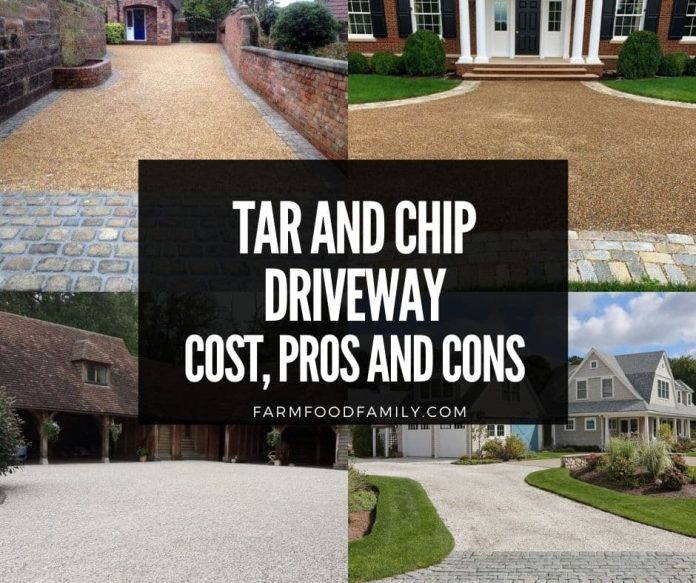Tar And Chip Driveway: Cost, Pros and Cons
When it comes to driveways, roadways and paving, tar and chip is a staple material. The name might not register to you immediately, but you have most likely seen it in some driveways nearby.
The success rate of using tar and chip especially in rural areas has been phenomenal. It is also considered as a cost-efficient material to use for roadwork and of course for driveways.
In this post, we roundup some of the important pointers that you must know about tar and chip driveways. A list of some tar and chip driveway ideas is also narrowed down for future reference. If you have always been curious about tar and chip driveways, read on.
In this article:
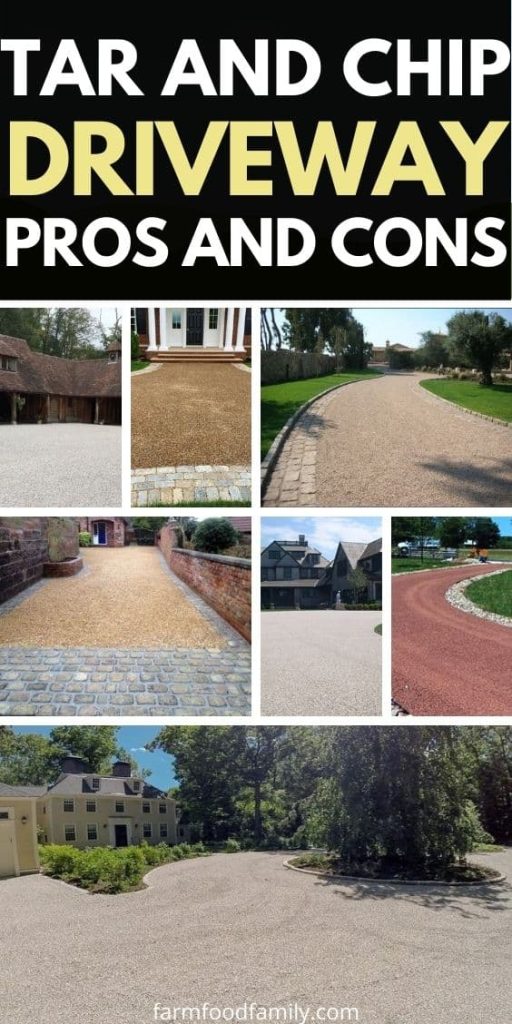
What is tar and chip driveway?
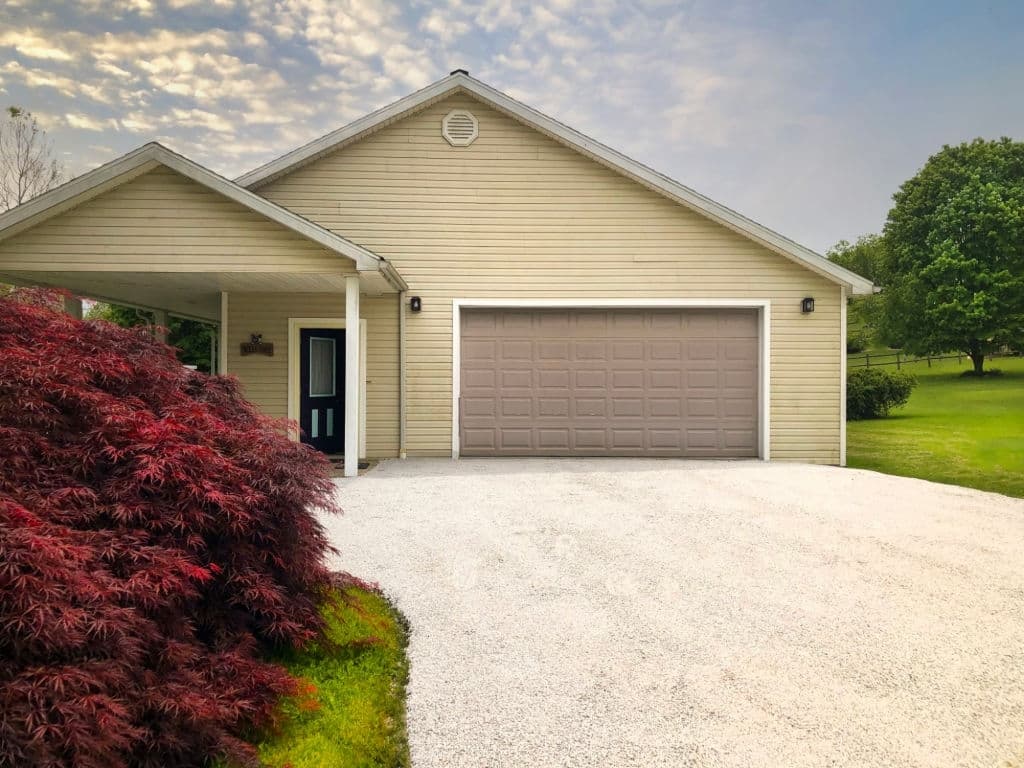
Tar and chip come in many names and most of us might remember it more in some of these. This material is also called seal chip, liquid asphalt and stone, chip and seal, and Macadam (named after the engineer who introduced it in the early 90s). It was created as a more low-cost alternative to asphalt for road work and driveways.
This type of material is made by combining crushed stones and hot liquid asphalt to create a more textured and solid surface compared to plain gravel. This is done by first pouring the hot asphalt on a gravel base and then layering it with loose stones for a more compact surface.
The best part is that you can customize stone layers in terms of color plus the compactness of the surface ensures a durable paving and a bump free ride.
Related: 19+ Types Of Gravel For Driveways and Landscaping
What does a tar and chip driveway look like?
At first glance, tar and chip driveways look like gravel paths because of its top layer composed of crushed stones. It is most identifiable for its tan, beige, gray, and somewhat orange look compared to the sleek black color of asphalt.
You have most likely driven on one. The bitumen layer under the crushed stones gives it one of the best cushioned traction for cars.
Tar and chip driveway cost
If you are estimating for a tar and chip driveway, just always remember that it is considerably more low-cost than asphalt but slightly more expensive than gravel.
In figures, you can set a tar and chip driveway at $2-5 per square foot. This does not include labor costs and other materials but compared to other concrete materials, this one is pretty much one of the least expensive.
You also must know that in terms of repair, maintenance and replacement, tar and chips are also more inexpensive compared to asphalt and other concrete materials. This is a main selling point for the preference over tar and chip.
Related: 20+ Best Driveway Ideas On A Budget
Tar and chip driveway pros and cons
This material is not invulnerable and like all else in nature, it also comes with sets of pros and cons. For you to be able to decide if tar and chip is the best material for your driveway, here are its pros and cons.
Pros
- Cost: As have been mentioned, tar and chip is slightly more expensive than gravel but it is considerably cheaper than asphalt and other concrete materials.
- Maintenance: Tar and chip is easy to maintain because it does not regular sealing plus small cracks can easily be guised using crushed stones as they heat up and kind of melt during hot seasons.
- Durability and longevity: You can enjoy tar and chip driveways for 12 years without the need for layering nor sealing. This is also the reason why tar and chips are considered cost efficient and low maintenance.
- Good traction: Aside from its ability to hold heavier loads, tar and chip driveways are comparable to asphalt in terms of surface traction. Expect a bump free and smooth car gliding when you use tar and chip as material.
- Natural beauty: With the use of tar-like substance and crushed stones in different colors, you reflect an earthy vibe for your driveway.
Cons
- Snow plows: Unlike asphalt, tar and chip is not affected by heat but is somewhat vulnerable to snow plowing. If you live in a location where thick layers of snow are experienced most times of the year, tar and chip is not the right material for your driveway.
- Skilled contractors: There is quite a shortage of tar and chip contractors because it is not as popular as asphalt so it is best that you master the ins and outs of tar and chip installation so you can do it DIY if you insist on having one for your driveway.
- Chip mess: Sometimes, with extensive use, the wear and tear of the crushed stones can be messy overtime. This is the reason why the top layer should be amended at least once a year to ensure that the crushed stones are intact.
Related: 25+ Best Driveway Lighting Ideas and Designs
Tar and chip driveway installation
Tar and chip installation resembles how asphalt concrete is installed too. Here are the basic steps in tar and chip driveway installation for your reference if you wish to install yours DIY.
- Spread the gravel base depending on the desired dimensions of the driveway.
- Melt the liquid asphalt and pour it on the gravel base.
- At this point, choose the color of the crushed stones that you want to top it with. Lay the choice of crushed stones on the liquid asphalt.
- Coat the loose stones and then furnish the surface by rolling bitumen over it.
- Allow it to cure for a few days or over a week before using your tar and chip driveway.
If you intend to install your tar and chip driveway DIY, you should be familiar with the following installation tips:
- You must install the tar and chip during warmer seasons for the molten liquid asphalt to dry and cure properly.
- The surface needs to be well prepared. All obstructions, from small, insignificant leaves, debris should be power washed first and other larger structures like basketball rings, should be transferred for the meantime to prepare the surface for tar and chip.
- Amend necessary surface impurities. Part of preparing the surface is fixing cracks, holes, and dents. You must do this not just to even the surface but also to make the tar and chip settle properly and last as it is expected.
- Make sure that the chip to be used is clean and not dusty. Dirty and dusty stone chips would not bind well with the molten liquid asphalt. As such, you would need to clean them first before laying them in.
- Spread the chips fast. The main trick for everything to be held in is to make sure that the stone chips are laid while the molten liquid asphalt is still hot.
Tar and chip driveway vs asphalt
It is easy to get confused between tar and chip and asphalt because both are made from molten liquid called bitumen which is a by-product of petroleum. To have a better view of their differences and similarities, you may refer to this table:
| Tar and chip | Asphalt |
| Durable but lasts for just 7-12 years. | Durable and can last for more than 30 years. |
| Can support heavy load. | Can support heavier load compared to tar and chip. |
| Comes in more color ranges. | Sleek black in color. |
| Weatherproof. | Vulnerable to heat. |
| Less susceptible to cracking compared to concrete. | Less susceptible to cracking compared to tar and chip. |
| Cheaper than asphalt. | Cheaper than most concrete materials. |
How to repair a chip and tar driveway
It is said that tar and chip driveways have a self-sealing mechanism during the hot seasons.
The thinner layers of chip would melt, and they would seal the dents and cracks in the surface. But if you want to make sure, repairing means that you must even or add, if necessary, the ‘tar’ and add a new layer of chip.
You can also ask your contractor about chip seals and how to use it in repairing chip and tar driveways. For reference, here is a video that you can follow.
[embedded content]
14 Tar and chip driveway ideas
The good thing about tar and chip driveways is that they are very versatile. They can be edged with bricks, stone, or concrete. They can also be just the overall driveway material for a rustic, farmhouse appeal. Here are some tar and chip driveway ideas that you can consider.
Related: 10 Best Driveway Edging Ideas On A Budget
1-2. Tar and chip and pavers driveway
This brick colonial style home has all the warm contrast that it needs for both driveway and main house. It features a large and curved tar and chip driveway with bricks and pavers as edging to keep the chips intact. The driveway look is also well complemented by the lush greenery around the home.

This is another beautiful courtyard style driveway using bricks and tar and chip. It evokes a warm, middle age vibe driveway with the stone pavers, bricks, and tan tar and chip.
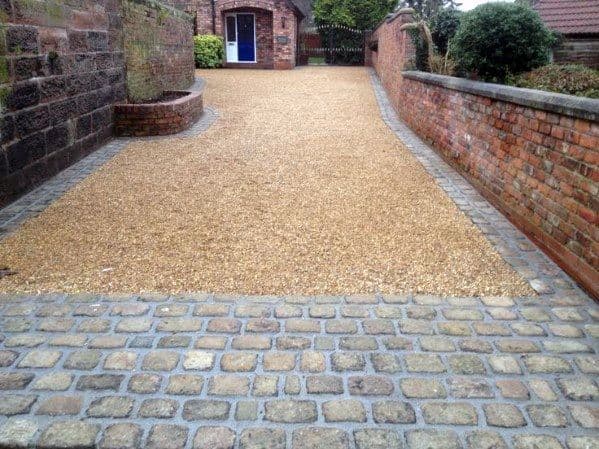
3-4. Long, tar and chip driveway
Tar and chip is a favorite material for driveways in rural areas because it is attuned with their rustic character. It is perfect for long driveways like this one. Using concrete pavers as edging again proves to be a classy touch for tar and chip driveways.

It could also be just tar and chip for a raw looking, long, rural driveway with just grass and shrub accents along the way like this one.
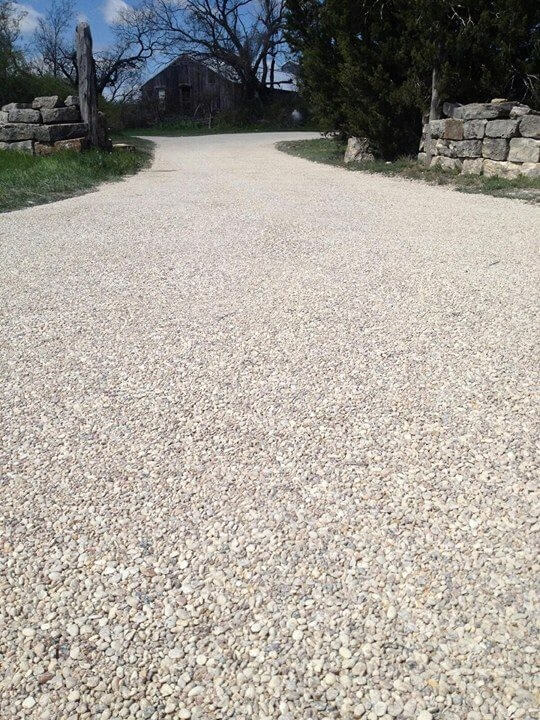
5-8. Stone paver and tar and chip
Perhaps, the most classic combination for tar and chip would be the use of stone paver. The gray tones of stone pavers could complement any color range of tar and chip.
For a neat look, the stone pavers can be positioned at the beginning of the driveway and then line up puffy grass turfs on the sides to enliven the look.
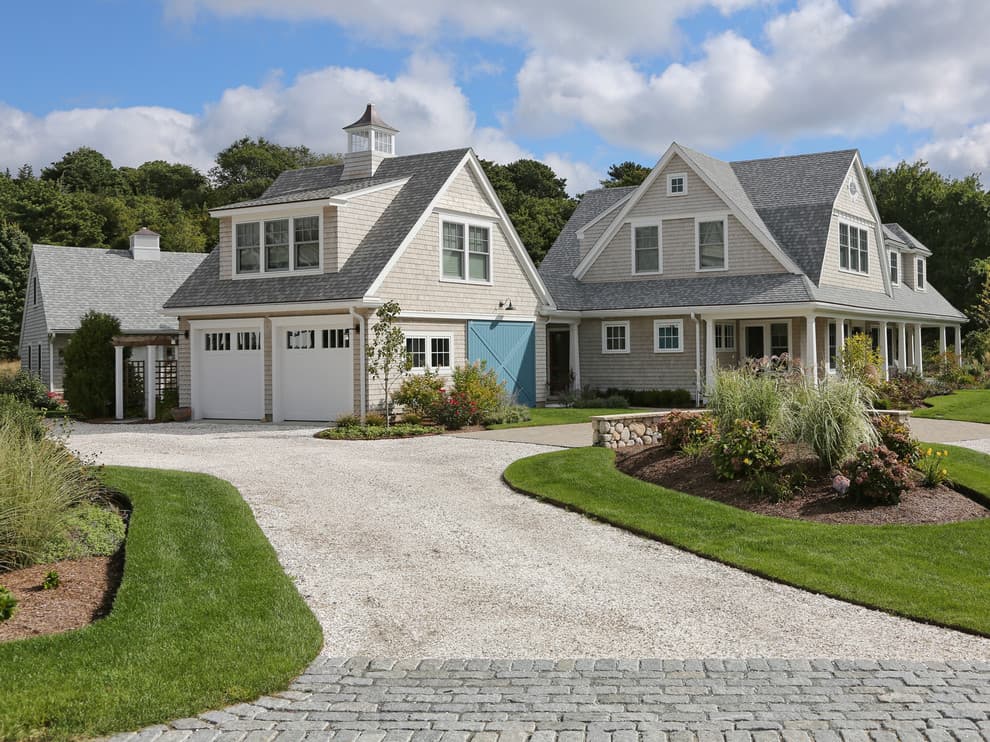
To have a continuous vibe, you can use stone pavers through and through until the driveway reaches the main house. The stone pillars of the driveway are also a fine touch to the good flow and curb appeal of the home.
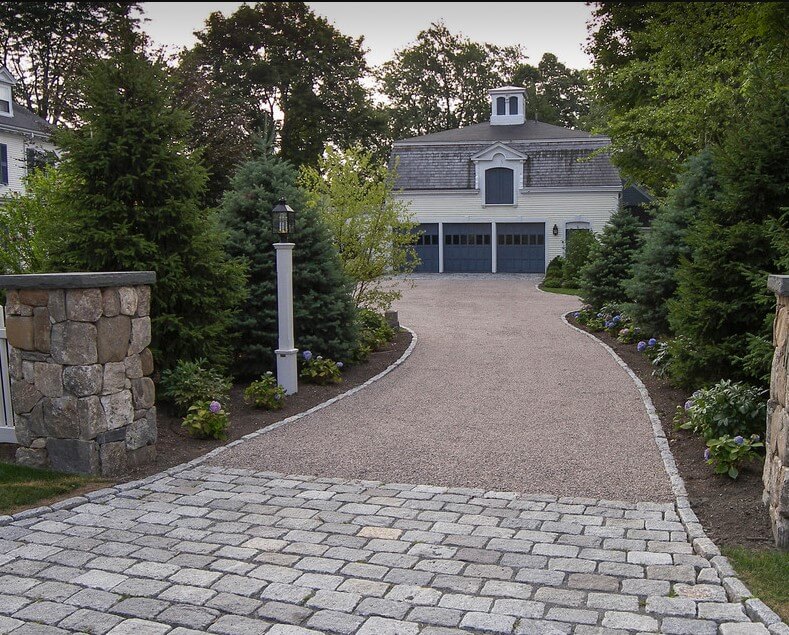
You can also have a geometrical, segmented design combining stone pavers and tar and chip. It adds angle to the look, making the driveway look more dynamic. It complements the contrast of the driveway and the tone of the home.
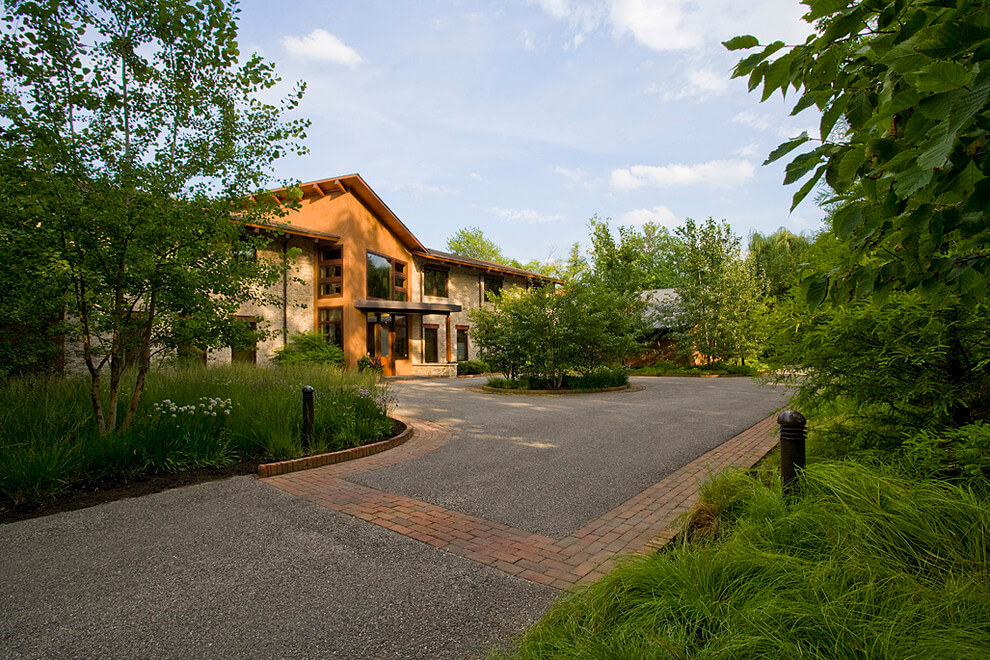
A raised stone boundary that is traced like wood can also give a contemporary, rustic vibe to the driveway and the yard. Here is a neat design for that.
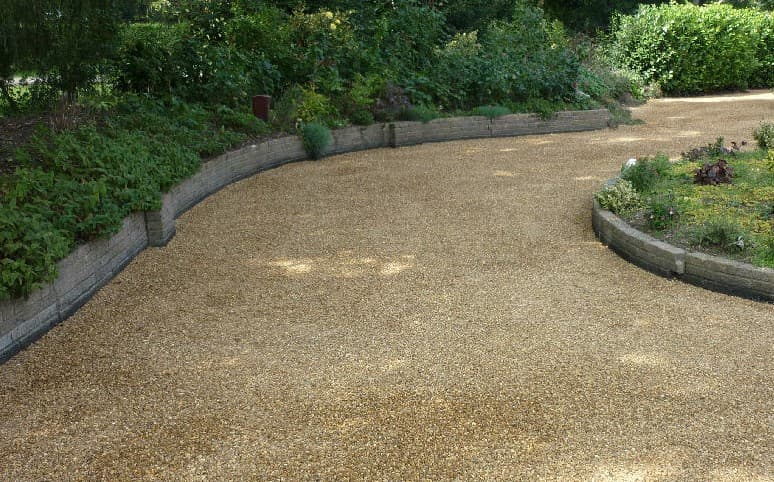
Related: 30 Best Driveway Gate Ideas and Designs
9-14. Vast, unedged tar and chip driveway
This design for a tar and chip driveway is the most inexpensive because you would not need to add material cost for the edging. Aside from this, it is also beneficial in emphasizing the vastness of the space or of having a long driveway that leads to an equally large yard.
Here is a rustic lodge house which proves that less is more. With just gray toned tar and chip and the dark contrast of the home, your home aesthetics is good to go.
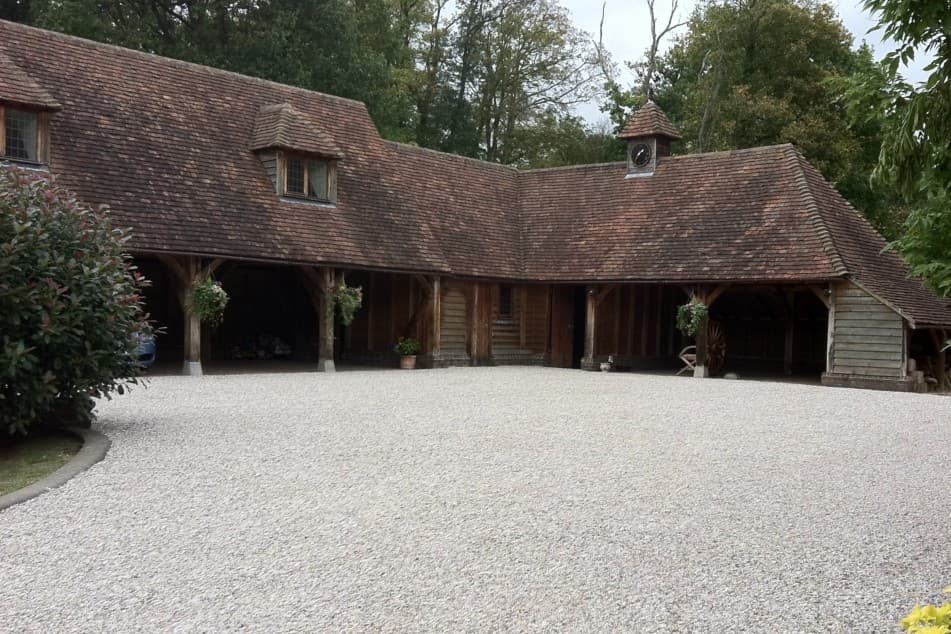
This is also a real showstopper especially that the tar and chip driveway cover the entire yard up to the main house.
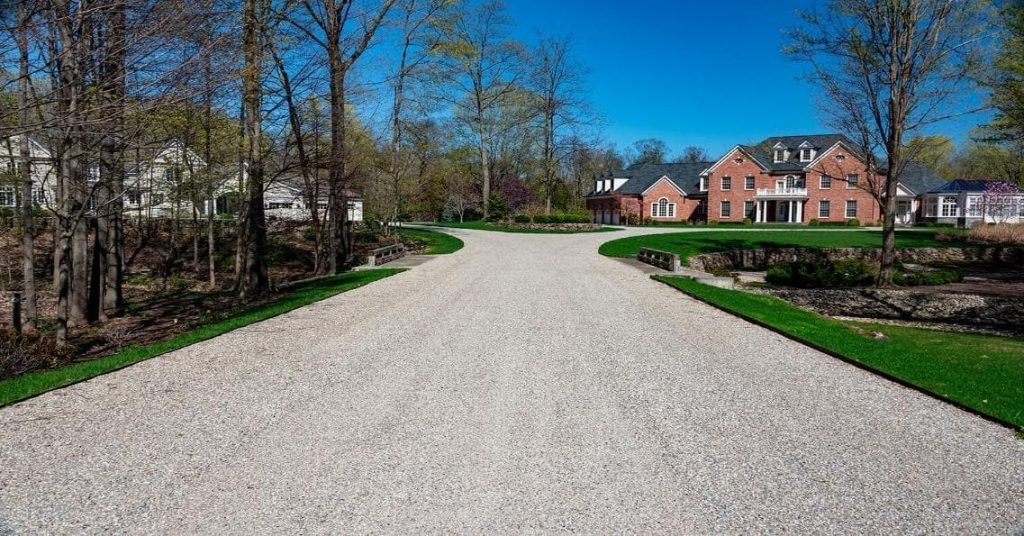
This large driveway here also indicates how hassle free it is to lay tar and chip in the driveway as well as for the rest of the yard.
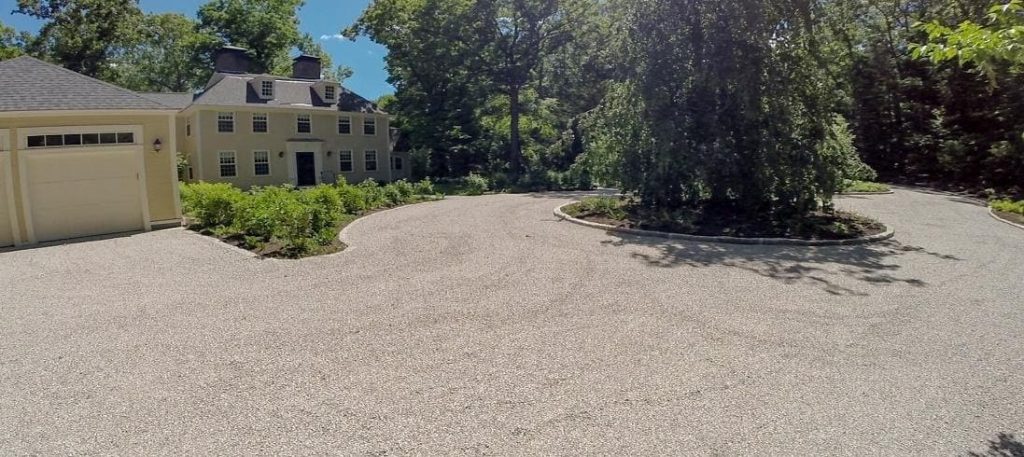
This is another example of how minimalist and rustic tar and chip driveways are even for different home designs.
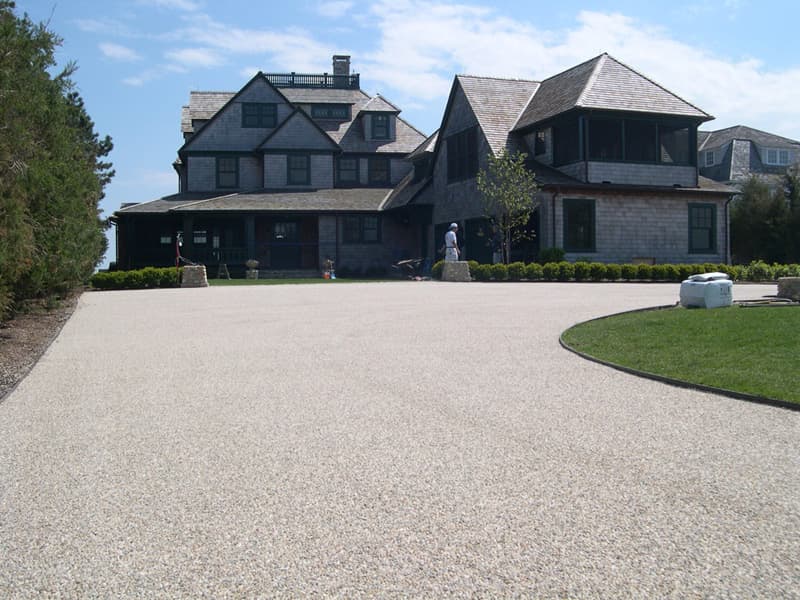
The addition of colorful stones against tar and chip also maintains the natural look of the driveway. This is a prime example of how it works.
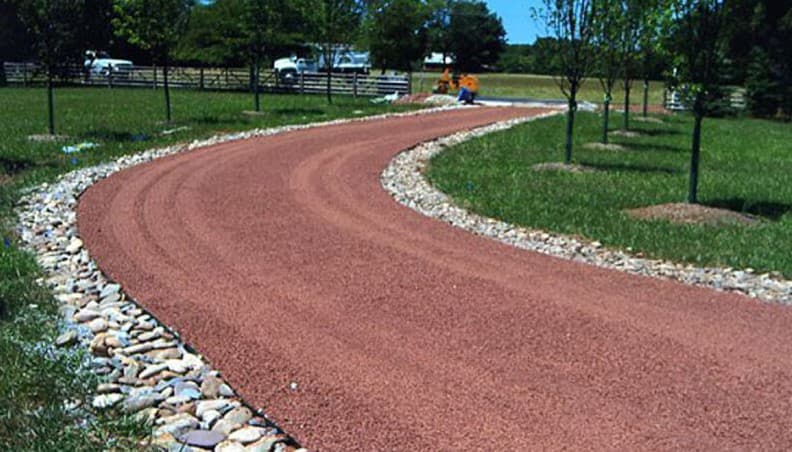
FAQs
Aside from all the essentials that we have covered when it comes to tar and chip driveways, there is other information that you must be aware of when it comes to this driveway material. As such, here are some valuable FAQs that you should keep yourself abreast with if you are considering a tar and chip driveway.
How many layers for a chip and tar driveway?
If you are installing a tar and chip material for the first time, the rule of thumb should be at least two layers. This gives your driveway the right traction and durability that could last for 12 years. If you are working on an existing blacktop driveway, a layer of tar and chip would do.
Related: 23 Best Concrete Driveway Ideas and Designs
Can you use a pressure washer on a tar and chip driveway?
Asphalt and concrete can be pressure washed but not tar and chip driveways. The only time pressure washing is needed would be during the preparation phase when all debris, leaves, and other obstructions should be cleared before the liquid asphalt is poured over.
How long does a tar and chip driveway last?
At an average, tar and chip driveways are estimated to last in between 7-12 years granting that it is properly maintained. After the span, an additional layer of crushed stones and stars must be placed. Remember that any concrete material could wear and tear through the years especially with extensive use.
How long does a tar and chip dry?
After installation, you should allow tar and chip to dry for 24-48 hours at least. But even then, they should not be driven on yet because the ‘tar’ needs to be fully cured. So, overall, you need to give it a whole week at least, to dry and cure on its own before you use it.
How thick should a tar and chip be installed in a driveway?
As per rule of thumb, tar and chip should be not more than 1.5-inches in the driveway. Less than this figure is not as bound and sturdy and more than this would lessen the traction of the tar and chip driveway.
Can you snowplow tar and chip driveway?
No. This is a big don’t when it comes to tar and chip driveways. The snowplow or shovel can break the tar and chip pavement seal.
When this happens, the top layer chips tend to break off and can be washed off in different parts of the driveway or around the home, in general. The best way to treat a snow laden tar and chip driveway would be to let the snow melt naturally.
Can you dribble a basketball on a chip and tar driveway?
Generally, hoopers do not appreciate tar and chip driveway because loose chips tend to attach themselves on the ball. Other than that, dribbling on it has an effect on the evenness of the tar and chip driveway. If you intend to use the driveway for casual hooping, might as well install a blacktop, tarmac, or asphalt driveway.
Related: 25+ Best Backyard Basketball Court Ideas and Designs
Would you need drainage for a tar and chip driveway?
It depends where you are located. For instance, in the UK, a tar and chip driveway still requires adequate drainage.
The reason for this is the idea that tar and chip surface is impermeable, so the water must be channeled to another space so that no water puddling happens on the surface. But in most cases, no, a tar and chip driveway can do well on its own.
Why do they tar and chip roadways?
Aside from being a cost-effective material, tar and chip material helps in absorbing water which is the main reason as to why the base of roadways become soft overtime and eventually crack. Hence, they tar and chip roadways because they are effective in road and pavement preservation.
Related: 30+ Easy & Inexpensive Paver Patio Ideas and Designs
Can you add aggregate concrete to a tar and chip driveway?
Interestingly, yes. And the best aggregates to add to a tar and chip driveway would be granite and pea shingle. For the granite, you can use angled crushed pieces. Flat granite or those with reflective surfaces are also fine aggregate choices for a tar and chip driveway.
Adding aggregate on a tar and chip driveway adds more traction to the surface. The granite and stones also protrude to the tar base so you would not slide even during icy and wet seasons as the chip is held in place firmly.
Related: 16+ Decomposed Granite Landscaping Ideas & Designs
Can you tar and chip an existing pavement or driveway?
If it is an asphalt, gravel or blacktop, yes, you can tar and chip an existing pavement or driveway. Contractors would say that tar and chip on an existing driveway increases the friction level of the surface, adding at least 7 years of pavement and driveway life. Adding the friction level of the driveway lessens snow related vehicular accidents.
The best time to add tar and chip on pavements or driveways would be during dry and warm seasons normally from March to August. Along with the tar and chip, an addition of aggregate concrete is also recommended.
Related: Sealing Asphalt Driveway Pros And Cons
Is tar and chip still used in main roads?
In the US and UK, tar and chip are still used in main roads especially in the outback or rural main roads. It started in the 1930s but now, blacktop and asphalt are now mostly used for national and main roads across these two countries.
Can you chip seal a tar and chip driveway?
Yes. This is called chip sealing (which ironically, tar and chip is also called sometimes). These are the advantages of chip sealing your driveway.
- Chip sealing is one of the most inexpensive pavement and driveway sealing.
- Chip sealing does not add any weight or pressure to the existing driveway or pavement.
- Chip sealing repairs surface damage without hassle (and prevents further damage in the long run).
- Chip sealing protects the driveway and the pavement from long exposures (specifically melting).
- Chip sealing adds friction to the surface and helps in keeping the chips intact.
- Chip sealing increases curb appeal.
Conclusion
With all the things that we have covered here, you now have a basic idea of what to expect with tar and chip driveways. By now it must already be clear to you that it is a preferred driveway material because of its durability and cost efficiency.
Moreover, the pros and cons of a tar and chip driveway must be assessed as a case-to-case basis so evaluate your location and deduce if tar and chip is the best material for you.

